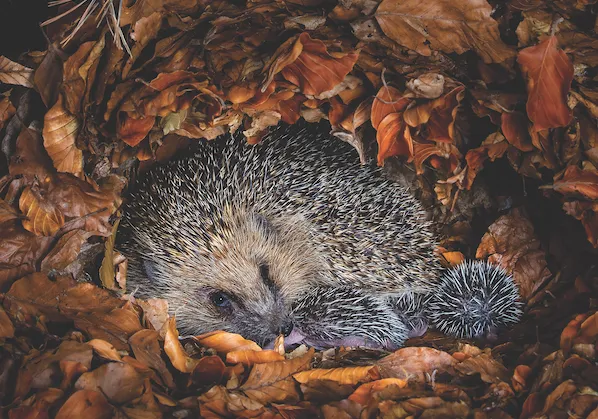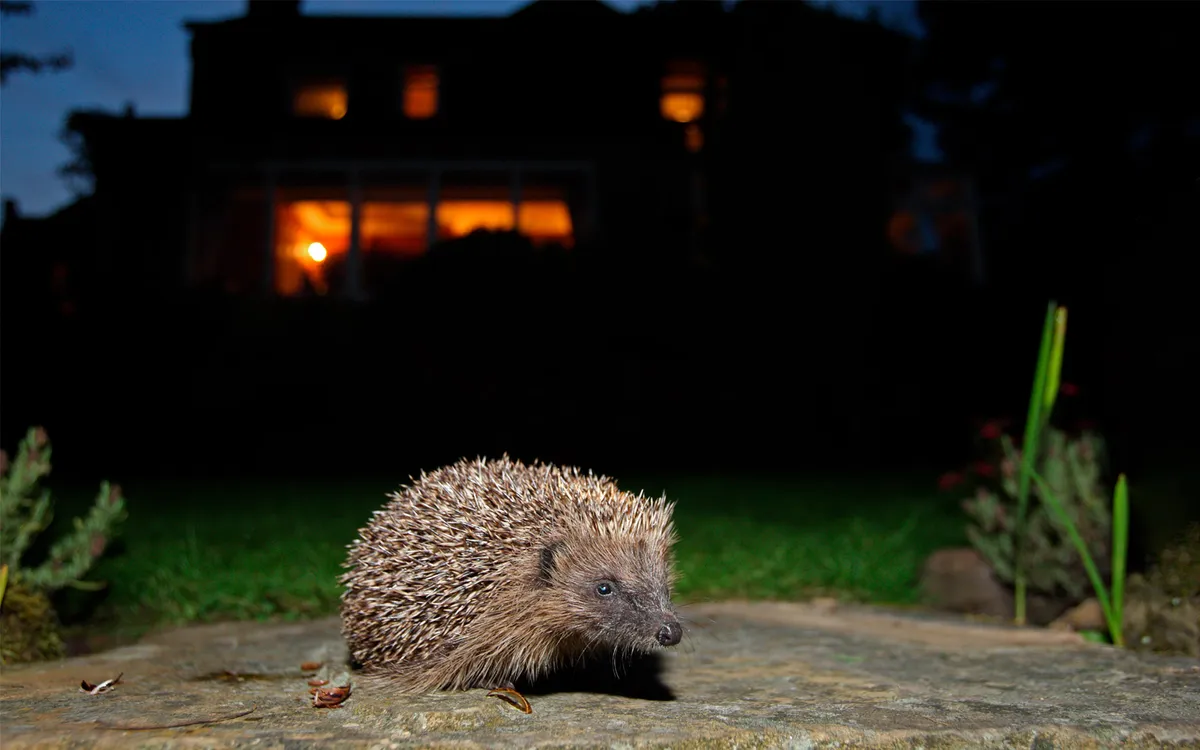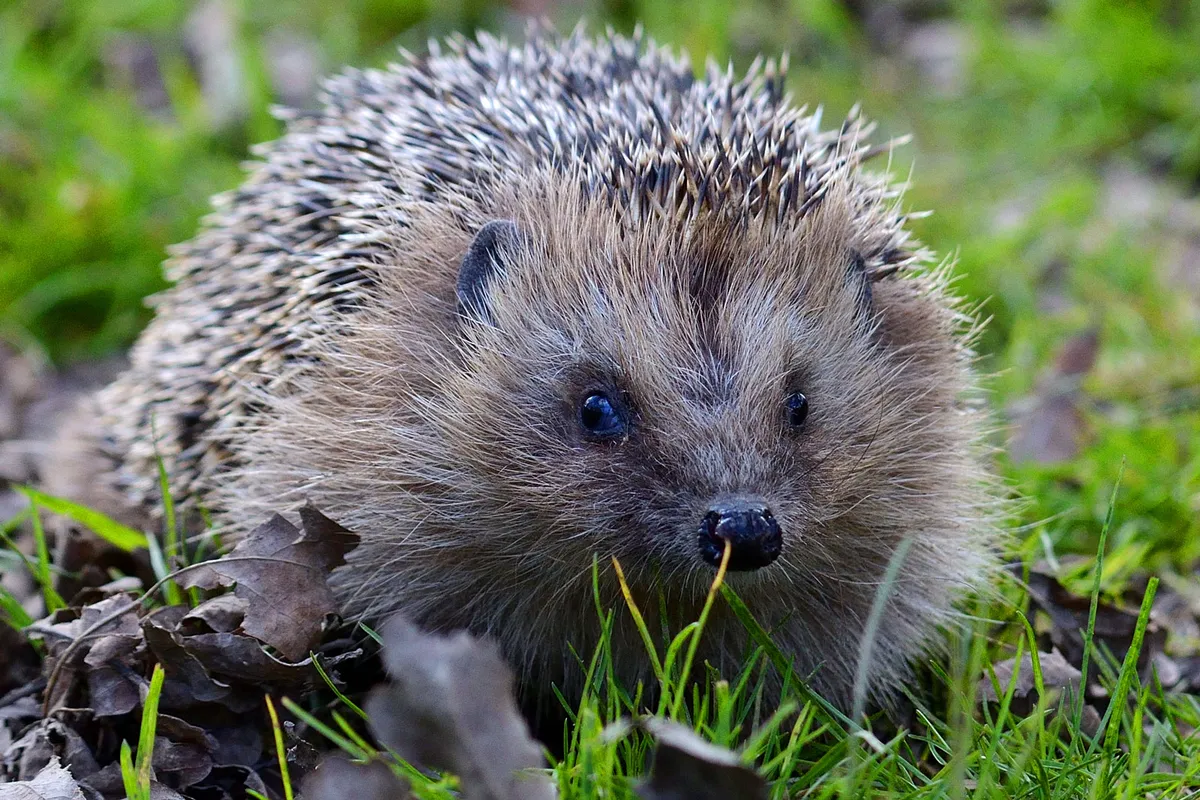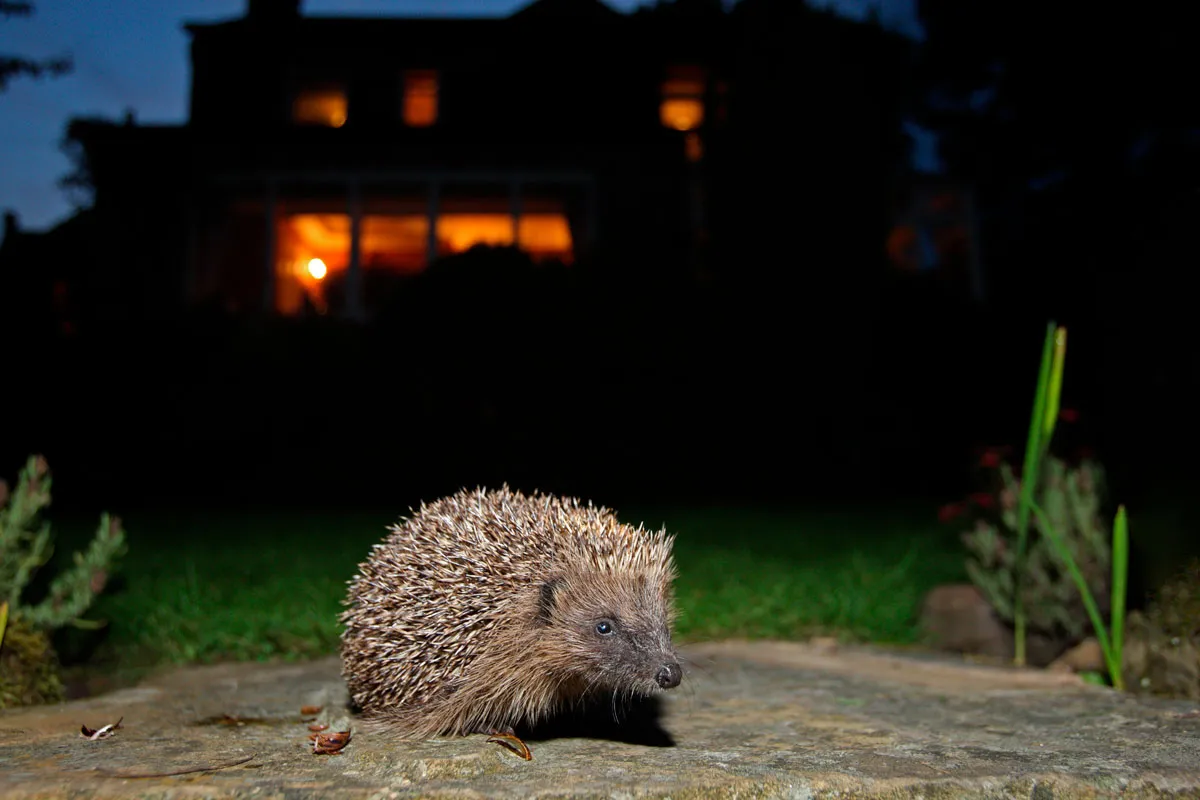One of Britain's most loved mammals are in serious decline. But thankfully there are a few simple actions that you can take to help turn this story around. Find out how you can help hedgehogs in your garden, including how to ensure your bonfire is hedgehog-proof.
Where are hedgehogs found in the UK?
Hedgehogs can be found across the UK, but the best chance of seeing one is on a summer night, as they are nocturnal and hibernate from November to March.
Hedgehogs like dry spaces such as under garden sheds, near compost heaps, hedges or even just an untidy bit of your garden — so be careful when moving or disturbing such spaces, especially during winter when they will be hibernating.
Where and for how long do hedgehogs hibernate in winter?
Depending on the temperature, hedgehogs will hibernate from November through to March or April. During hibernation, a hedgehog’s body temperature can fall to less than 10°C, its heart slows to fewer than 20 beats a minute and it virtually stops breathing. Hedgehogs build nests for hibernation under leaves or structures such as sheds or, unfortunately bonfires which is why it is essential to check before lighting.

How to keep hedgehogs out of your bonfire
As Bonfire Night approaches, it's worth remembering that this celebration poses a particular risk for hedgehogs. Toward the end of autumn as hedgehogs start to look for places to overwinter, a pile of leaves and branches could seem a very inviting place for a hedgehog to hibernate, being sheltered and dry, only to find themselves later trapped inside freshly lit bonfires. When you come to light your wood pile, the panicked hedgehog remains inside the bonfire, and is soon overcome by smoke.
But if you are planning a blaze this autumn, don’t worry — there’s a simple solution to avoid any hedgehog casualties.
Before lighting your bonfire follow these easy steps:
- If collecting wood beforehand, make sure to keep it under tarpaulin or in a shed
- Don't construct the bonfire until the actual day of your festivities, then move it to a different spot if kept there for a while.
- If you're having a large bonfire that needs to be built in advance, place chicken wire one metre high around the area, held in place with stakes and angled outwards, so that the hedgehogs can't climb it.
- Build your fire on open ground – not on piles of leaves, which are also a favourite place for hedgehogs.
- Light the fire from one side only – and keep people away from the unlit side, so any hedgehogs have an escape route.
- Avoid setting bonfires near pampas grass – another favourite spot for hedgehogs to hide under. Pampas grass can ignite very easily from bonfire sparks.
- If a large bonfire must be built in advance, build a hedgehog-proof fence around it using chicken wire. Hedgehogs are good climbers – so your fence should be at least 1m high, firmly staked, and sloping outwards at an angle to make it hard to climb.
- If a bonfire is left unattended for even a short time, check for hedgehogs before lighting. Hedgehogs tend to hide in the centre and bottom 2 feet of the bonfire, so check by gently lifting the bonfire section by section with a pole or broom. Never use a spade or fork as these can injure them. Use a torch to help see into the shadows. Listen for a hissing sound – this is the noise they make when disturbed.
What to do if you do find a hedgehog in a bonfire
Wear gardening gloves, which stops human scent getting on the hog, minimises stress to them and saves your hands from spines. If you spot a hedgehog in your bonfire, use a pole or broom handle to lift the pile.
Take as much of the nest as you can and place into a high-sided cardboard box with holes in the top, lined with newspaper and old towelling. Make sure the lid is firmly secured, or the hedgehogs may climb out and injure themselves. Place the box in a shed or garage away from the bonfire and noise of fireworks, which will scare them. Once the bonfire has completely dampened down, release the hedgehog under a hedge, bush or behind a stack of logs, leaving out food and water. Try and release them the same night if possible, to reduce stress for the hedgehog.
How far can hedgehogs travel?
Hedgehogs wander up to 12 miles in one night and often cross busy roads in urban areas to find food or drink.

What do you call a baby hedgehog?
A baby hedgehog is called a hoglet. Like humans, hedgehogs have baby teeth that fall out about 3 weeks after they’re born. Hedgehogs are usually silent but will emit snorts while courting. Occasionally, the animal will emit what hedgehog expert Pat Morris calls “the most awful noise – like a very loud pig squeal.”
How do hedgehogs protect themselves?
A hedgehog has two large muscles on either side of its back to raise and lower its quills and curl into a ball. Their spines are flexible and can cushion the hedgehog from heavy blows or falls.

When is National Hedgehog Day?
Wednesday 2nd February is National Hedgehog Day.
Upcoming hedgehog events in 2022
The International Conference for Hedgehog Rehabilitators: 19th–20th February 2022
Held at Hartpury University, Gloucester, the conference brings together hedgehog researchers and carers to share best practices in hedgehog care. hedgehogconference.com
Hedgehog Awareness week: 2nd–8th May 2022
Hedgehog Awareness Week aims to highlight the problems hedgehogs face and how you can help them. Organised by the British Hedgehog Preservation Society (BHPS), the charity aims to raise awareness of how we can help these animals.
Are hedgehogs endangered in the UK?
The UK’s hedgehog population has fallen by half since 2000, according to the 2018 State of British Hedgehogs report. Intensive farming and a loss of natural habitat are thought to be contributing to the species decline. Despite the results showing a decline in rural hedgehogs, it also shows a improvement for species in urban areas. Although hedgehogs have decline by a third in towns and cities since the Millennium, the rate of decline is slowing. They aren’t disappearing as quickly as they were 15 years ago, and in some areas might even be returning.
Hedgehogs don’t sunbathe! How to help a hog in need
The British Hedgehog Preservation Society has issued a plea for people to keep an eye out for hedgehogs in need of help.
Hedgehogs are nocturnal so should not normally be out in the daylight. There are some exceptions to that rule, for example if a nest has been disturbed and the hedgehog is relocating, or if a busy mum is taking a break from the nest. However, these hedgehogs would be moving quickly ‘with purpose’.
If you find a hedgehog in need of help, the Society suggest you use gardening gloves or an old towel to collect the animal, place it inside a high-sided cardboard or plastic box with the towel or an old T-shirt in the bottom for it to hide under. Bring the box indoors away from flies. If the hedgehog isn’t bleeding, offering a warm wrapped hot water bottle is good first aid, but do make sure there is room for it to get off if it gets too warm and ensure the bottle is not allowed to go cold. Offer some meaty cat or dog food and water, but don’t force feed it.
Once you’ve done that, call a local hedgehog rescue centre if you know of one, or BHPS on 01584 890 801 for further advice and local contacts.
How to help hedgehogs in your garden: 9 simple steps
In autumn, the breeding season for hedgehogs comes to an end and the young leave their mothers in search of independence. The first time alone in the wild can be challenging for hedgehogs as the autumn and winter months see their food supply (insects, worms, slugs and other garden creatures) beginning to dwindle. If they lack this food they can die during hibernation, so as the weather turns colder it’s good for them to have a comfy garden spot to nest in. In addition, being a key predator of garden pests such as caterpillars, snails and slugs, hedgehogs really are a gardener’s best friends so it’s worth making your garden a habitat they can explore with ease.

1
Make your garden a hedgehog highway
Make sure hedgehogs can get in and out of your garden. Hedgehogs will need a 10cm square space to move through.
2
Watch out for water
If you have a pond in your garden, make sure there is an easy way for hedgehogs to get in and out. Try building a ramp or ladder. A simpler alternative is to wrap a plank in chicken wire to create a ramp that the hedgehog can grip to escape from water.
Alternatively, place rocks near the edge of a pond to allow a hedgehog to crawl out, or introduce a shallow pebbled area which will encourage other wildlife to take a dip too. Make sure to cover up swimming pools when not in use.

3
Find a natural alternative to slug pellets
Laying down slug pellets in your garden not only removes potential food for hedgehogs, but can also kill them. Instead of using toxic pellets, try making a beer trap. Place a container in the ground, making sure to leave it poking out of the ground by a couple of inches to stop other insects falling in, then half-fill the container with beer. A quick internet search will also conjure up plenty of hedgehog-friendly ideas for slug control.
4
Check long grass before mowing or strimming
We all know to check for hedgehogs before lighting bonfires or plunging a shovel into the compost heap, but it’s also well worth checking for hedgehog nests before chopping down any long grass.
5
Keep netting off the ground
If you’ve got netting dangling in your garden or garage, make sure you keep it above hedgehog height (about 30cm) to stop them curling up and getting stuck.
6
Avoid giving them milk

Hedgehogs are lactose intolerant, so ignore the old wives tale and don’t leave out a saucer of milk for your prickly pals. Provide fresh, plain water instead.
It is also thought to be bad for hedgehogs to eat pumpkin, which acts as a laxative and causes severe dehydration at a time when they're striving to gain as much weight as possible. So, it's best to avoid leaving this autumn vegetable out for them to eat at Halloween.
7
Keep your garden a bit untidy
Too much neatness — such as decking and neat and smooth fencing — won’t help hedgehogs, and can act as a barrier, making it difficult for them to travel further to forage for food, and to meet other hedgehogs during breeding season. Talk to your neighbours and, if they agree, cut 13cmx13cm holes in your fences or dig a channel beneath garden boundaries to connect your gardens.
8
Check your recycling
Crush tin cans and cut the plastic rings that connect cans as both can be hazards for small mammals.
9
Create a hedgehog haven

Leave piles of logs and fallen leaves for hedgehogs to nest in – and, in autumn, prepare for hibernation. Don't forget to check these for any hedgehogs if pulling them apart.
